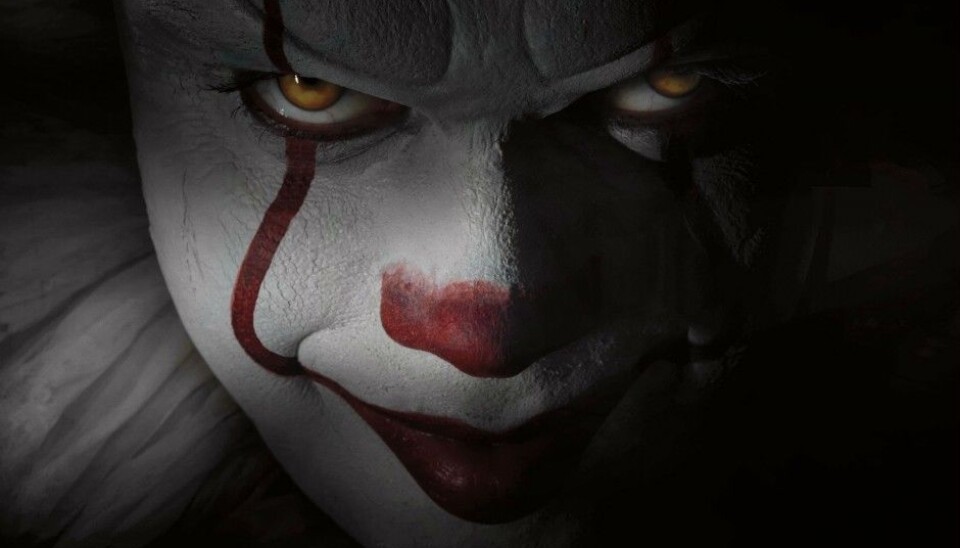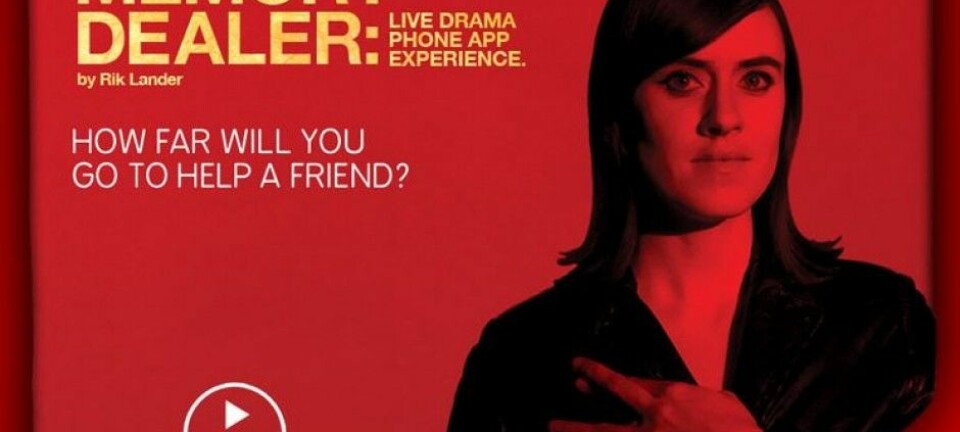This article is produced and financed by Inland Norway University of Applied Sciences - read more

Why do we like watching horror films?
It allows us to feel anxious in a safe environment, according to film scholar and psychologist.
"The first of the three main reasons we like watching horror films is quite elementary," says film scholar Søren Birkvad of Inland Norway University of Applied Sciences: "Horror films entertain us".
We like watching horror films simply because it's entertaining. It acts as a means to fend off boredom.
Personality tests reveal that those who are bored easily often score higher than others on a trait called “sensation seeking.” Several studies show that those who score high in regard to this trait, show an increased liking of horror films.
Thus, some people jump off mountains with parachutes, while others go to amusement parks to enjoy roller coaster rides. Horror film enthusiasts watch films.
Explaining evil
Another reason we are drawn to the darkest of film darkness is that the horror film is a way of unravelling evil.
"Formerly religious explanations of evil are nowadays given a diagnosis. One subjects the evil actions to scientific or psychotherapeutic explanatory models," says Birkvad.
We are familiar with the diagnoses from, for example, forensic psychiatry where different psychoses or personality disorders are assessed from a psychological and social perspective.
In society as a whole, little or no discussion revolves around evil anymore. We simply do not believe in the demonic as a force in itself, perhaps with the exception of some extremely religious environments, Birkvad points out.
However, in popular culture – and especially in the world of film – evil is presented as an independent phenomenon through the horror genre.
"Evil is reserved for this genre of popular culture because we no longer believe in the compelling explanatory models that the local priest once gave us," says Birkvad.
Ideas and myths like Frankenstein provide us with, for example, an explanation for human technological arrogance, where the man-made monster turns on its own creator.
Dr Jekyll and Mr Hyde shows us the human divide of good and bad, while more or less Freud-inspired films and TV series such as "Psycho" and "Twin Peaks" revolve around our notions of dangerous sexuality.
Testing limits within safe surroundings
A third and last reason, which Søren Birkvad addresses, is what he calls the anthropological and therapeutic utility of horror film; It teaches us to deal with our own anxiety.
This occurs partly through the familiar frameworks that are found in every proper genre film – including the horror film – and partly through the rituals we build around the viewing experience.
"We see it in the way teenage boys occasionally use horror films as part of a kind of manhood test where it's about keeping one’s composure as much as possible," says Birkvad.
In this perspective, the horror film becomes a way to test our personal and collective limits in a safe environment.
If it gets too scary, you can just cover your ears, put your hands in front of your eyes, ease the tension with an amusing quip, or turn to your popcorn bowl for comfort.
Psychologist Svein Åge Kjøs Johnsen adds:
"In psychology we call this activation of a feeling “emotional regulation.” By watching horror films one can have a sense of control over both the situation, or the viewing experience, and over the feeling of fear. Watching a scary film may possibly also function as a distraction from other feelings."
Sigmund Freud provides us with three possible explanations for why we experience things that behave abnormally as intimidating:
1. We nowadays live in an enlightened time, but thoughts like "what if there actually are ghosts" create excitement. As such, seeking this kind of experiences may be a kind of logical reality-check.
2. Such experiences may evoke different types of repressed complexes or ideas that we may wish to process.
3. Freud claims that most people are never completely freed from "infantile anxiety," that is, fear of darkness, loneliness and silence. He provides no direct explanation as to why we would wish to seek out something that reminds us of such infantile anxiety, but it could be related to curiosity.
Roots in mythical narratives
"The horror film is one of three basic genres in film. These consist of comedy, melodrama, and thriller – or horror film," says film scholar Birkvad.
All of the above appeal to basic feelings in us like humour, empathy, discomfort or excitement. In addition, there are porn films, which aim to evoke sexual arousal.
The horror film has its roots in mythical performances and presentations, but also in the Gothic horror literature of the 1800s with its relatively modern myths such as Mary Shelley's "Frankenstein," Robert Louis Stevenson's "Dr Jekyll and Mr Hyde,” and Bram Stoker's vampire tale “Dracula.”
Driven by unknown forces
Psychologist Kjøs Johnsen also notes Sigmund Freud's term "Das Unheimliche," the uncanny, as a common theme for horror films.
The term refers to how everyday situations, or objects, suddenly seem to be ruled by unknown forces. Frightening.
"In several films by David Lynch, and in the "Twin Peaks" series, it seems that this principle has been used almost directly," says Kjøs Johnsen.
Scary measures
The horror film is one of the oldest film genres. Dating back to the silent film period of the previous turn of the century, we have been dreadfully delighted with this particular type of film.
The German silent film "The Cabinet of Dr. Caligari" from 1920, is considered a milestone in cinematic history.
The film utilized previously unknown visual techniques where shadows were highlighted to create an uncertain and disoriented atmosphere. Many of the shadows in the film were painted directly on the set, which helped highlight the unnatural and creepy mood.
Other effects that were used to reinforce evil, were strong and grotesque makeup and crooked camera angles.
The film migrates to Hollywood
In the period before World War II, many artists – some of Jewish ancestry – fled away from Nazi Germany to the United States. Among these were people from the film branch. With this, the development of cinema received a further boost, not least of which the horror film in Hollywood.
"The genre started evolving in the direction of the heavily psychological, inspired by Sigmund Freud's psychoanalysis, and we eventually got films such as 'Psycho,' 'Rosemary's Baby,' 'The Silence of the Lambs', 'Twin Peaks,' 'The Ring,' and the self-referring teen horror films such as 'Scream'," says Birkvad.
All have an enduring common thread of horror and sexuality.
































